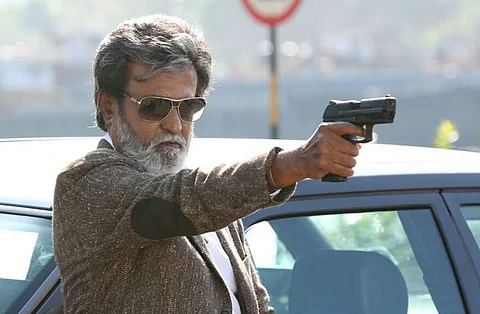

The “Kabali” festival is still going strong despite mixed reviews from critics and Rajini-sceptics. Amidst all the celebrations, though, there are some murmurs in the Kollywood grapevine about “Kabali” managing to get a ‘U’ certificate – after all, it’s a gangster film that has plenty of violence, with people dropping dead like flies in every other scene. There are shots of Kabali mowing someone down with a car, a pregnant woman held at knife-point and thrown to the ground brutally and several scenes where goons get shot in their head. There’s a severed arm in a box that’s delivered as a warning and towards the end, there’s a rather graphic visual of a hand getting shot and blown away. There are also references to drug and sex trade in the film.
It's an open secret in the film industry that the gods in the Central Board of Film Certification tend to be pleased more easily by the offerings of certain devotees over others - the more powerful you are, the faster you skip the queue to get your darshan, after all! So is it because "Kabali" is a Rajinikanth film that it got away with a lenient certification?
This is a fair question to ask and it is perhaps a good time for us to examine why we have film certification in the first place and if it is of any use at all. In India, the CBFC certifies films as ‘U’ (Unrestricted public exhibition), ‘U/A’ (Parental guidance for children below 12), ‘A’ (Adult), and ‘S’ (restricted to special audiences). The last two categories are clear enough for the most part, but the classification seems pretty arbitrary if one were to look at films that have been certified as ‘U’ or ‘U/A’. Take the Kamal-starrer “Papanasam” which is a remake of the Malayalam film “Drishyam”. The film received a ‘U’ certificate though it has sexual and graphic violence – there is an especially disturbing scene of a cop brutalizing a small child to get her to spit out the truth. The scene is integral to the story and it’s necessary for it to be there but shouldn’t this mean that the film should have been categorized as ‘U/A’?
It’s puzzling that a film like “Nanbenda” which has sexually loaded, crass jokes received a ‘U’ certificate while “OK Kanmani”, which is about a consensual, live-in relationship and was as vanilla as it gets, received a ‘U/A’. Is this about who makes the film? Apparently not always…Mani Ratnam’s earlier film, “Raavanan”, which was about a woman falling in love with a violent man who abducts her and has a rape scene to boot received a ‘U’ certificate. On the other hand, “Iraivi”, which has the usual dose of violence in Tamil films but has female protagonists mouthing their sexual desire openly in a couple of scenes received a ‘U/A’. Vijay’s action films which have plenty of violence are usually passed with a ‘U’, the most recent being “Theri”. The Vikram-starrer, “Kanthasamy”, which had the highly explicit ‘item’ number “Yen peru Meena Kumari” also got away with a ‘U’. What celestial logic explains all this?
The CBFC has a long list of guidelines and if film-makers were to abide by it, we’d have to press the delete button on most of Indian cinema. This is not an argument for more censorship but for better certification. There is much debate on the effect of visual media on young children and studies have shown that constant exposure to violence can desensitize young people and slow down their response time when it happens in real life. In India, parents routinely take their young children to the theatre, often ignoring the film’s certification and even arguing with the usher who is reluctant to let the kids in since it breaks the law. Even if we’re conscientious about following the rules, it’s hard to decide looking at the ‘U’ and ‘U/A’ if a child can watch the film – while I’d have been completely okay with my small daughter watching “OK Kanmani”, I wouldn’t have subjected her to a “Nanbenda”! Other countries have many more categories for films but I’m not sure if adding more categories will help if we don’t address why we have this seemingly random pattern in the first place.
The debate on film censorship in India has unfortunately become a polarized one, thanks to the controversy surrounding "Udta Punjab". You’re either in camp Pahlaj or you’re on the other end of the spectrum. Anything you say about making responsible cinema or better certification is misinterpreted as a threat to the freedom of expression. Indeed, as a parent, I don’t wish to soundproof my child from popular culture – but I do wish that the CBFC would be more consistent in how they classify films and don’t go by the names that appear in the credits or their special brand of twisted morality. In our crowded, fast-paced lives, the cinema is often a favourite family outing. It is important to think about which films we can all sit down and watch together and which ones we cannot – it’s a decision far more critical than which flavour of popcorn to buy and it deserves more of our time and attention.
Note: The views expressed here are the personal opinion of the author